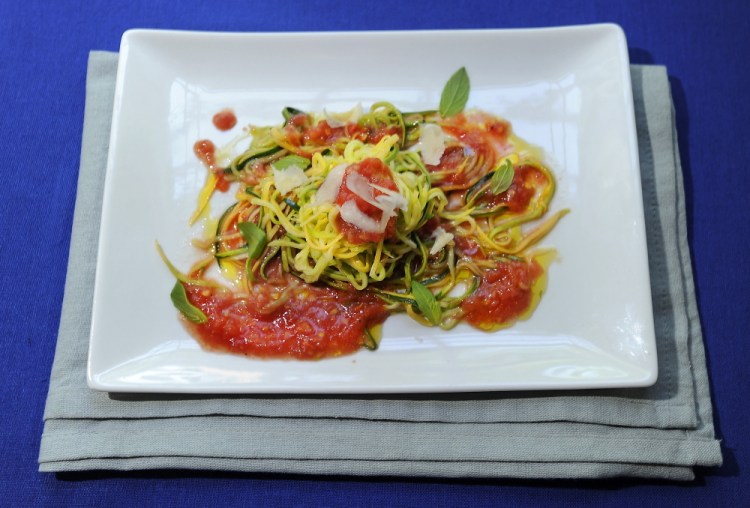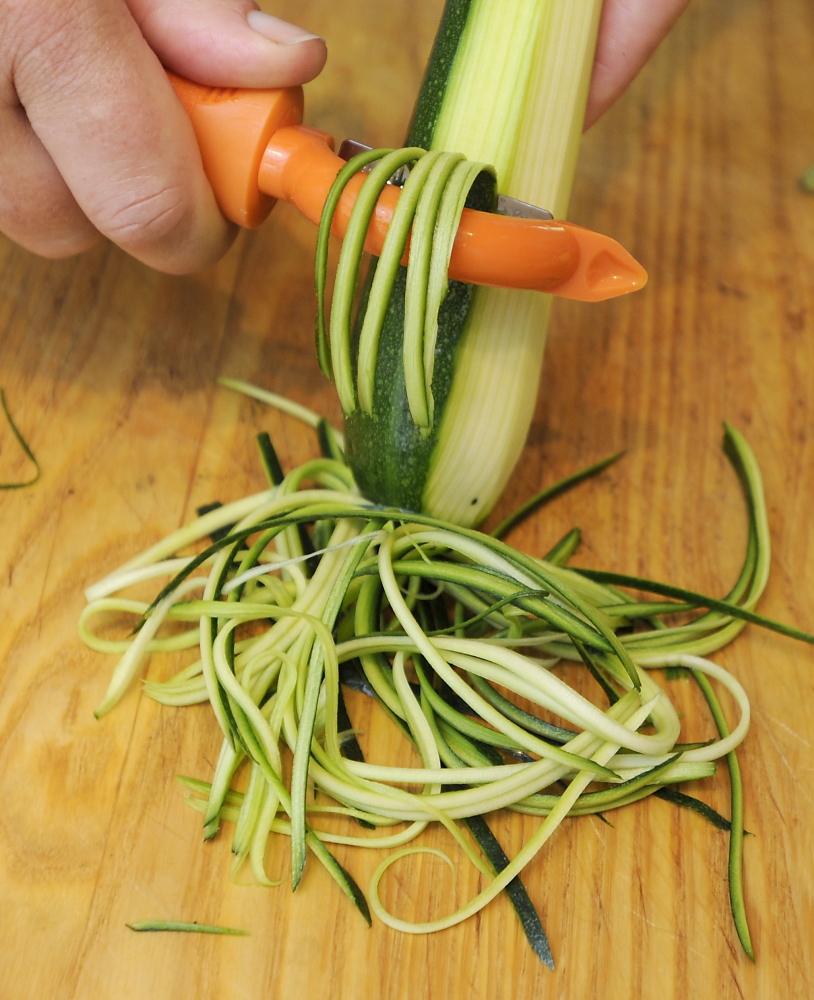I’m not going to lie for sustainability’s sake. With the steamy weather of late, when every human, stone and wooden surface in my 200-year-old home was just plain sticky in spite of extraordinary hygiene efforts, I pined for the central air conditioning we had in our home in Pennsylvania.
I don’t shy away from the label “heat wimp.” My husband jokes that my temperature comfort zone lies between 72.1 and 72.4 degrees Fahrenheit. And it has to be that dry kind of heat. He laughs at his witty repartee every single summer, but then again, he doesn’t do the cooking.
As the mercury and humidity rise, my willingness to turn on the stove wanes. Salads are great and the grill is always good, but there are also a number of simple “cooking” techniques I employ to put a good meal on the table without releasing any additional heat into the atmosphere.
The first involves working with raw fish. If that makes you squeamish, fast forward to the vegetable section below. I go out for sushi, as I consider that a highly specialized craft, but at home I make Latin American ceviche and Italian tuna crudo.
Making ceviche – I use a recipe chef and Mexican food expert Rick Bayless serves at Frontera Grill in Chicago – involves simply cutting the freshest white flaky ocean fish you can find into bite-size pieces and letting them sit in a mixture of citrus juices, herbs and chilies for several hours in the refrigerator. The citric acid tightens the proteins in the fish, effectively “cooking” it, while flavoring it strongly. Ceviche can be served in a communal bowl with tortilla chips as a starter or as the main ingredient in a taco meal.
In Italian, “crudo” means raw. I have attempted crudo only with local scallops or top-quality tuna obtained from a fishmonger I totally trust. I slice the scallops or fish into ¼-inch-thick pieces and arrange them on a plate that’s been drizzled with good olive oil, then I drizzle the seafood with more olive oil, salt and pepper and chopped capers. I top the fish with a mix of arugula and sliced red onions that has been dressed with lemon juice and olive oil.
My go-to, no-cook vegetable option that mimics my kids’ favorite pasta dishes, both in terms of presentation and satisfaction, has been commercially highjacked by the Spiralizer. That’s a $50 kitchen gadget that turns a zucchini or summer squash into long ringlet strands of simulated pasta. I’ve typically used either a mandolin or my $7 julienne peeler to get the same thin strands, but mine aren’t curly. Regardless of how you start the process of making this “pasta,” you put the prepped squash mixed with a good amount of kosher salt in a colander. The salt pulls the water from the squash, making it lax enough to twirl on a fork. Rinse the salt off and pat it dry, and it’s ready to be sauced with no-cook concoctions like your favorite pesto, raw tomato and garlic sauce (recipe below), cream laced with tarragon and black pepper, or lemon juice, olive oil and pecorino cheese.
Once you’ve picked your sauce, you’ve got dinner. No sweat.
ZUCCHINI PASTA WITH RAW TOMATO SAUCE
The recipe for this simple sauce comes from the “Canal House Pronto!” cookbook published by Christopher Hirsheimer and Melissa Hamilton. They serve it with hot pasta, beautifully styled in their book with long strands of bucatini. But when it’s too steamy to boil a pot of water, I run with “zuccghetti.”
Serves 4-6
FOR THE “PASTA”:
3 pounds zucchini or summer squash
¼ cup kosher salt
FOR THE RAW TOMATO SAUCE:
2 pounds ripe tomatoes, halved
2 garlic cloves, finely chopped
½ cup tomato puree
4-6 tablespoons good olive oil
Salt and pepper
Freshly grated Parmigiano-Reggiano
Small handful of tiny fresh basil leaves
To make the pasta, use a mandolin, julienne peeler or vegetable Spiralizer to turn the whole squash into long strands. Combine squash strands with kosher salt in a colander. Let sit for 1 hour. Rinse and set aside.
To make the sauce, grate the cut sides of the tomatoes on the large holes of a boxed grater into a large bowl, discarding the skin. Repeat until there are 2 cups of loose tomato pulp. Add the garlic, puree and oil. Season with salt and pepper.
Toss “pasta” with raw tomato sauce in a large bowl. Drizzle with olive oil and season with salt and pepper. Serve with lots of Parmigiano-Reggiano and garnish with basil.
Christine Burns Rudalevige is a food writer, recipe developer and tester, and cooking teacher in Brunswick. Contact her at cburns1227@gmail.com.
Send questions/comments to the editors.




